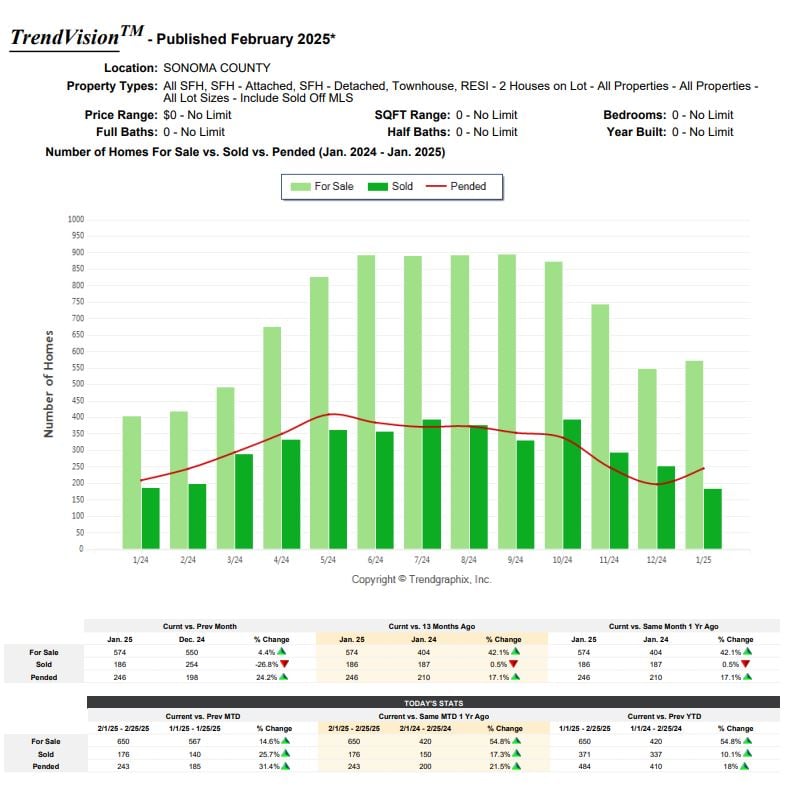


Racing to a “Soft Landing” of the Marketplace
Having dumped nearly $6 trillion over the last two years into the national economy and witnessing the consumer do what they know best – spend – the Federal Reserve now is charged with trying to reign in the frenzy of demand using its ultimate tool – the control of interest rates.
According to BAREIS MLS, April’s data points indicate that Sonoma County buyers successfully contracted to purchase 444 single-family homes – 127 percent more than the number of new listings introduced during the month whereas a year ago the percentage of sales ratio was 86 percent of that. This means more homes are being sold on a percentage basis in comparison to 2021. Couple this with property owners delivering just 350 new offerings in the month – 48 percent fewer than last April - and you find a recipe for values to press higher typically, though with interest rates changing significantly it is better to bet on them not. Buyers managed to complete purchases on 448 dwellings – 28 percent less than a year ago and primarily due to the lack of available inventory.
The compression within our markets is easily understood by realizing that the spike in buyer demands coupled with reluctant sellers over time creates a chasm that inevitably forces prices higher to tempt sellers to market. This prolonged immense activity has created a hurried pace causing available inventory to sell promptly while less new offerings have been showing up in each of the preceding 12 months, thereby leaving us with 421 single-family homes to carry over into May compared to the 596 units available for sale during this same period last year while leaving the Sonoma County market staring at an absorption rate of 106 percent.
The absorption rate is calculated by dividing the total number of homes sold in a month by the total number of homes available for sale at the end of the same month. A high absorption rate – 20 percent and above – indicates that the supply of available homes will shrink rapidly, thereby increasing the odds that an owner will sell a property in a shorter period. Conversely, an absorption rate below 15 percent is indicative of a buyer’s market, meaning homes are selling more slowly.
One of smallest of the seven Bay Area Counties, Marin, is still one of the few hotter locations - at least on a percentage basis - than Sonoma County. With April in the rearview mirror, we should see sellers awakening to participate once again – especially if they worry that prices are not continuing to skyrocket upwards and that some buyers may drop out of the near-term market. Marin property owners introduced 151 new single-family offerings in the period – 49 percent less than a year earlier – with buyers promptly absorbing 249 homes in consummated contracts. Sellers brought finality to another 225 transactions during the period leaving the entire region with just 143 homes available for buyers to peruse in May – 20 percent less than last year at this time. Marin’s pace still highlights one of the Bay Area’s most hurried markets with the absorption rate now at 157 percent.
Napa County’s markets being another ripple in the pond out maybe already feeling some effect from the governments’ action to raise the cost of borrowing. Available monthly inventory at the end April stood at 194 units – just two percent less than this same time last year. Sellers managed to deliver 109 new offerings to the market in the period while buyers placed 119 new deals into escrow. Home sellers closed out another 125 sales during the month establishing a 64 percent absorption rate.
With interest rates moving so abruptly we anticipate this to eventually abate the frenzy within our markets – this is how the Federal Reserve works to control inflationary pressures by creating a significant change in the cost of borrowing whereby cooling some consumers interest in homes - among other things - to ultimately allow supply to build into the market while abating near term demand, thus forcing the markets to find an equilibrium sooner rather than naturally. The trick is that once the Federal Reserve encounters this, they then must work to ensure the proverbial “soft landing” – which could mean that they may have to lower rates to hold the country out of recession or nudge them higher if they did not push them far enough initially. We have seen this happen before and stand ready to guide you through the bumps ahead.
Stay up to date on the latest real estate trends.








